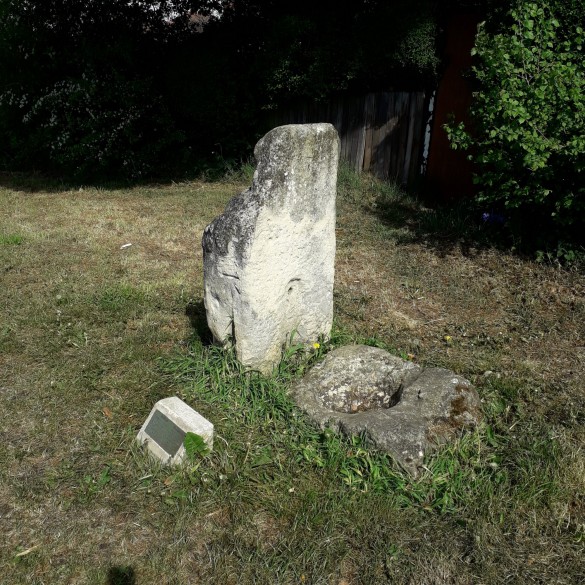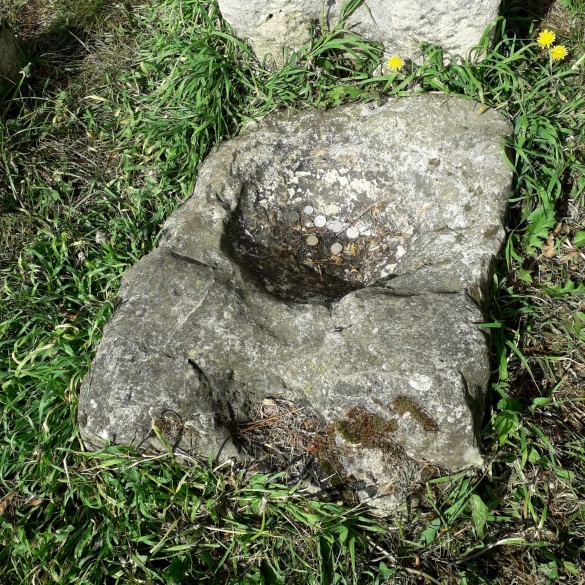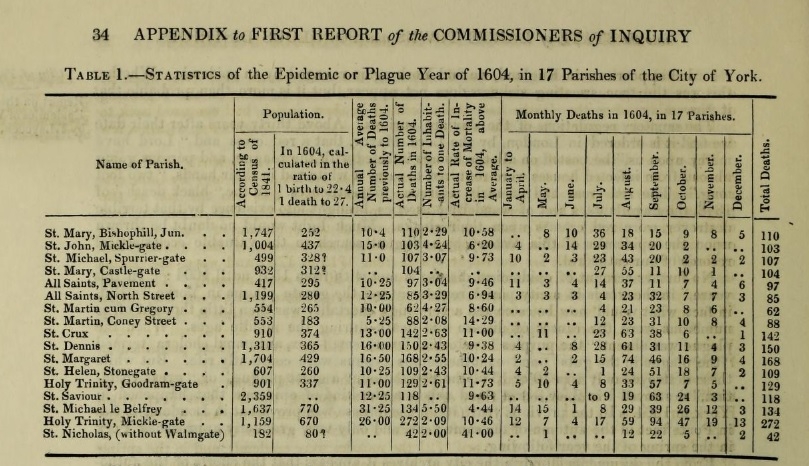22nd June 2020
The Great Visitation of 1604 : the plague in York
Elaine Bradshaw writes about an event in the past which evokes resonances with today:
Currently the death rate in England from Coronavirus is around 1 in 1500. Go back 400 years and the death rate in York could hit 1 in 15. Epidemics and diseases were many, and people accepted this as quite normal. However the Great Visitation of 1604, when the plague came to York, was in a completely different league. In that one year, 1 in 3 people died.
The plague hit London in 1603, so York probably knew it was coming. Measures were taken to prevent beggars and vagrants bringing it in, but nobody thought to deal with the overcrowded housing in the parish of St Michael’s, Spurriergate. This pestilential area was the spawning ground of previous plagues and also the cholera epidemic in 1832. The first case of plague was recorded there on 4 June 1604. Deaths [NB from all causes] shot up, peaked in August, and decreased as suddenly as they had risen.
The City was locked down for business. No markets were held. Crosses were erected a mile or two from the City on several of the main roads, and markets were held around them.
Many people fled the city, but many stayed and became infected. Those who had the plague were quarantined in plague lodges outside the city walls in Horsefair (Gillygate), Clementhorpe* and Hob Moor. The biography of Thomas Morton, then Pastor of Long Marston and later Bishop of Durham, says “the poorer sort of the infected were turned out of the City, and had booths erected on Hob Moor.”
Thomas Morton was a doughty Christian. He braved the plague and went out to Hob Moor to preach to the afflicted, but also took out food for those in isolation. Other people paid to have food brought in and money was left out for payment in a hollowed out stone. It was filled with vinegar in the vain hope of disinfecting the coins. The Plague Stone can still be seen on Hob Moor, a small historical curiosity that has suddenly taken on a new significance.

The Plague Stone at Hob Moor





